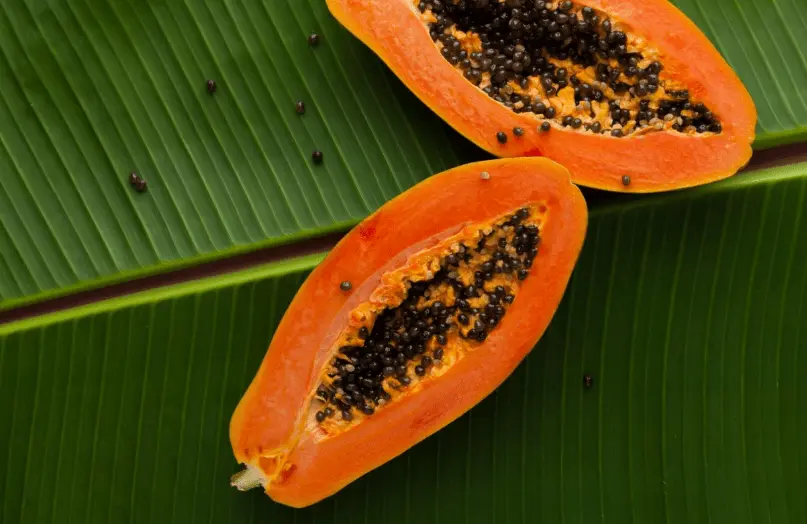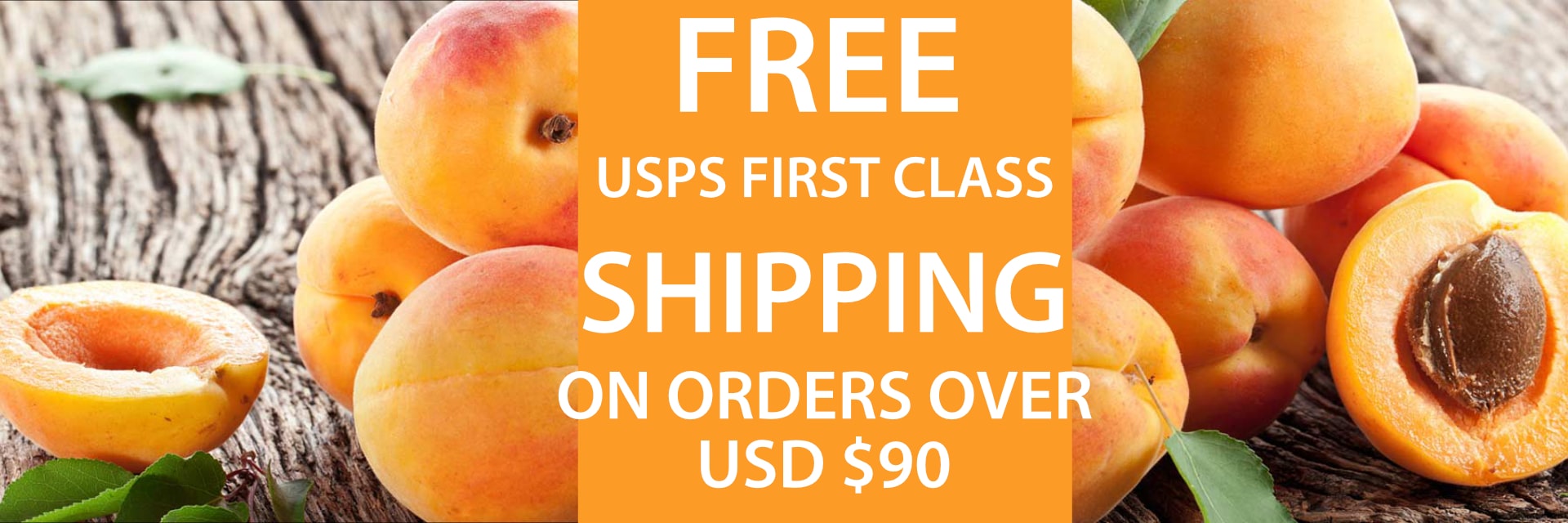List of pancreatic enzymes that could be useful for your digestive system.
There are many types of pancreatic enzymes that could be useful for your digestive system. Here we will highlight some of the ones we recommend, as well as information on where they are extracted from:
| # |
Enzyme Name |
Enzyme Benefits |
| 1 |
Pancreatin |
Pancreatin enzyme is typically extracted from the pancreas of pigs or cows. Pancreatin is a mixture of three digestive enzymes: amylase (breaks down starch), lipase (breaks down fats) and protease (breaks down proteins). This mixture allows for the digestion of food and therefore promotes a healthy weight and increases the absorption of nutrients and minerals (3). |
| 2 |
Papain |
Papain enzyme is extracted from the papaya plant and is classified as a cysteine protease, which is an enzyme that breaks down proteins. Papain is extracted from the latex of the papaya plant and is a highly efficient enzyme that has been utilized to aid in fluid retention, inflammation, stomach pain, infection, diarrhea, and allergies (4). |
| 3 |
Bromelain |
Bromelain is typically extracted from the stem and fruit of the pineapple plant. This enzyme has been utilized to reduce pain and inflammation, promote digestion and muscle repair. Bromelain has also been used topically for burns and injuries (5). Additionally, it has been utilized to treat bronchitis, sinusitis, as well as relieving diarrhea and certain cardiovascular disorders. |
| 4 |
Trypsin-Chymotrypsin |
Trypsin and Chymotrypsin are considered proteolytic enzymes which have been utilized clinically since the 1960s as a treatment for tissue repair. It has been found to resolve inflammatory symptoms and to promote a faster tissue injury recovery than other enzymes. Its anti-inflammatory and antioxidant properties help in resolving symptoms of inflammation, while also having analgesic properties and minimizing pain (6). |
| 5 |
Serratiopeptidase |
Serratiopeptidase is another protein enzyme that is extracted from silkworms. This enzyme, similarly to Trypsin-Chymotrypsin, has anti-inflammatory, anti-edemic, fibrinolytic, anti-biofilm and analgesic properties (7) |
| 6 |
Nattokinase |
Nattokinase is derived from Natto which is a type of food made from fermented soybeans and has been consumed as a traditional food in Asian countries for centuries. Research has found that Nattokinase aids in cardiovascular health through its antihypertensive and lipid-lowering properties (8). |
| 7 |
Thymus |
Thymus is usually extracted from the thymus glands of young calves and is one of our major immune system glands. It is located just below the thyroid gland and above the heart. The thymus is responsible for our immune system as it produces white blood cells responsible for immunity. Research conducted on Thymus extracts have suggested that thymus can aid in the production of T-cells and therefore aid the immune system, as well as reducing inflammation (9). Thymus may have been utilized in aiding respiratory infections, asthma, hay fever and food allergies. |
| 8 |
Glutathione |
Glutathione is produced in the liver and is one of the most important antioxidants found in the body due to almost every organism on Earth utilizing it as well as its role in maintaining vitamin C and E. This antioxidant is typically produced from cysteine, glutamic acid, and glycine. Our body utilizes this antioxidant to protect our mitochondria and therefore aid in the production of energy for our body (10). Glutathione has several functions, some of the most important are its antioxidant properties, its ability to lower the risk of heart attacks, reduce inflammation and aid our energy production. |
| 9 |
N-Acetyl-Cysteine |
NAC is a drug that is approved by the Food and Drug Administration (FDA), as well as the World Health Organization (WHO). NAC is typically utilized to treat acetaminophen overdoses as well as aiding in respiratory diseases. It has antioxidant and antiinflammatory properties that allows it to aid in our respiratory health. NAC has also been utilized to treat other disorders such as chronic bronchitis, liver cancer, asthma, preterm birth, among others (11).
|

Why should I take digestive enzyme supplements?
Digestive enzymes seem to have gained popularity these recent years for treating digestive issues, such as gut irritation, heartburn, and stomach aches. In this article we will discuss what digestive enzymes are, what they do, and which we recommend for aiding your digestion.
You might be wondering, if my body naturally creates these digestive enzymes, why should I take digestive enzymes supplements? The answer is that some people do not have enough digestive enzymes and this can cause complications, one of the most common ones being lactose intolerance. This is due to your body not producing enough lactase, which is the digestive enzyme that breaks down lactose. Some symptoms of digestive enzyme insufficiency are stomach pain, bloating, diarrhea, gas, oily stools and unexplained weight loss (1, 2). Enzyme supplements exist to aid and complement our digestive system, particularly our pancreatic enzymes. These supplements aid in having digestive wellness and provide any support our pancreas or digestive system may need.
What kind of digestive enzyme supplements should I take?
Digestive enzymes are derived typically from either plants or animals. Regardless of where theyhave been derived from, they all fall under the large umbrella of digestive enzymes. Within that umbrella, there are pancreatic enzymes, which are strictly derived from animals due to only being found in the pancreas and plant based enzymes.
When looking for digestive enzymes, we suggest looking for a blend that optimizes digestion (2) (we will get to that in the next section). We also suggest focusing on pancreatic enzymes, since the majority of our digestion occurs in this organ. We suggest making sure to watch out for the type of capsule they are being sold in. When we consume a capsule or a tablet, our mouth releases enzymes and acids to break down this capsule/tablet and to absorb its nutrients. This usually would not be a problem, but in regards to pancreatic enzymes, we require a capsule that can endure high acidity so that the capsule can make its way down our stomach without being broken down until it arrives at the pancreas.
If it does break down before it arrives at the pancreas, the digestive enzymes will not be optimized. For that reason, we suggest looking for Enteric Coated Capsules (ECC). These capsules have been coated with an acid resistant material that permits the capsule to go through our stomach without breaking down until it arrives in an alkaline environment with a ph of 5.5 or higher, which typically corresponds to our pancreas. Most capsules dissolve in 15 min, but ECC tends to dissolve in 1 or 2 hours. This capsule will allow the pancreatic enzymes to arrive at their destination and therefore optimize your digestion.
We hope that this article has helped you understand more the role that enzymes play in our health. As always, we suggest speaking to a physician before taking on any new supplements.
Works Cited
(1) Denhard, Morgan. “Digestive Enzymes and Digestive Enzyme Supplements.”Www.hopkinsmedicine.org, 2022, www.hopkinsmedicine.org/health/wellness-and-prevention/digestive-enzymes-and-digestive-enzyme-supplements.
(2) David Wolfson, ND, Stephen Olmstead, MD, Dennis Meiss, PhD, and Janet Ralston, BS. Making Sense of Digestive Enzymes.
(3) Mark Johnson, Keith Hillier, Pancreatin, Editor(s): S.J. Enna, David B. Bylund, xPharm: The Comprehensive Pharmacology Reference, Elsevier, 2007, Pages 1-3,
(4) Kang,Y.-M.;Kang,H.-A.; Cominguez, D.C.; Kim, S.-H.; An, H.-J. Papain Ameliorates Lipid Accumulation and Inflammation in High-Fat Diet-Induced Obesity Mice and 3T3-L1 Adipocytes via AMPK Activation. Int. J. Mol. Sci. 2021, 22, 9885.Papain Ameliorates Lipid Accumulation and Inflammation in High-Fat Diet-Induced Obesity Mice
(5) Chakraborty AJ, Mitra S, Tallei TE, Tareq AM, Nainu F, Cicia D, Dhama K, Emran TB, Simal-Gandara J, Capasso R. Bromelain a Potential Bioactive Compound: A Comprehensive Overview from a Pharmacological Perspective. Life (Basel). 2021 Apr 6;11(4):317. doi: 10.3390/life11040317. Erratum in: Life (Basel). 2024 Apr 07;14(4):483. doi: 10.3390/life14040483. PMID: 33917319; PMCID: PMC8067380
(6) “The Role of Trypsin:Chymotrypsin in Tissue Repair.” Figshare, 19 Apr. 2018,The Role of Trypsin:Chymotrypsin in Tissue Repair. 3. Accessed 4 July 2024.
(7) Jadhav SB, Shah N, Rathi A, Rathi V, Rathi A. Serratiopeptidase: Insights into the therapeutic applications. Biotechnol Rep (Amst). 2020 Oct 17;28:e00544. doi: 10.1016/j.btre.2020.e00544. PMID: 33134103; PMCID: PMC7585045.
(8) Chen H, McGowan EM, Ren N, Lal S, Nassif N, Shad-Kaneez F, Qu X, Lin Y. Nattokinase: A Promising Alternative in Prevention and Treatment of Cardiovascular Diseases. Biomark Insights. 2018 Jul 5;13:1177271918785130. doi: 10.1177/1177271918785130. PMID: 30013308; PMCID: PMC6043915.
(9) Afonso AF, Pereira OR, Cardoso SM. Health-Promoting Effects of Thymus Phenolic-Rich Extracts: Antioxidant, Anti-Inflammatory and Antitumoral Properties. Antioxidants (Basel). 2020 Sep 1;9(9):814. doi: 10.3390/antiox9090814. PMID: 32882987; PMCID: PMC7555682.
(10) Pizzorno J. Glutathione. Integr Med (Encinitas). 2014 Feb;13(1):8-12. PMID: 26770075; PMCID: PMC4684116.
(11) Mokhtari V, Afsharian P, Shahhoseini M, Kalantar SM, Moini A. A review on various uses of N-acetyl cysteine. Cell J. 2017; 19(1): 11-17.











